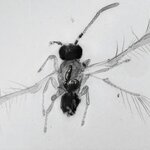Ecology & Zoology

If you are toughing out harsh winter weather, snow can be a relief. It's a respite from biting winds and subzero temperatures.
But winter and spring snow cover in the Northern Hemisphere has declined in recent years, putting plants and animals that depend on the space beneath the snow to survive the blustery chill of winter at risk.
Since 1970, snow cover in the Northern Hemisphere — the part of the world that contains the largest land masses affected by snow — has diminished by as much as 3.2 million square kilometers during the critical spring months of March and April. Maximum snow…

Is a David and Goliath battle brewing in commercial squid fishery, with larger purse seiners
robbing "scoop" fishermen of their livelihoods, sometimes illegally?
That is what Virginia Hennessey wrote in the Monterey Herald. Hearing claims of three squid brail (smaller boat) fishermen, one might think that the larger seine vessel squid fishermen are illegally catching all of the allowable quota.
But that’s just not the case. In fact, not only is there an abundance of squid in California’s waters – more than enough to go around – most of the brail-boat fishing fleet have no problem with…

Mymaridae, commonly known as fairyflies, are one of about 18 families of chalcid wasps. Fairyflies are everywhere except Antarctica and include the world's smallest known insect - Kikiki huna, the body length of which is only 0.13 millimeters.
Fairyflies are among the most common chalcid wasps but seldom noticed by humans because of their minute size. Their apparent invisibility and delicate wings with long fringes invoke imagery of mythical fairies and earned them their common name.
All but two known fairyfly species are parasitoids of eggs of other insects. These eggs are commonly laid in…

Male and female birds often show differences in body size, with males typically being larger. Some birds, like many ratites – large, flightless species such as emus and cassowaries – are the opposite, with the females towering over the males.
But some extinct ratites, among the largest female birds in the world, were almost twice as big as their male mates. A new paper says that the size difference in giant moa was not due to any specific environmental factors but instead evolved as a result of scaling-up of smaller differences in male and female body size shown by their smaller-bodied…

Many factors can push a wild animal population to the brink of collapse and ecologists have long sought ways to measure the risk of such a collapse.
Last year, MIT physicists demonstrated that they could numerically predict a population's risk of collapse by monitoring how fast it recovers from small disturbances, such as a food shortage or overcrowding. However, this strategy would likely require many years of data collection.
The same research team writing in Nature now describes a new way to predict the risk of collapse, based on variations in population density in neighboring regions.…

Researchers visiting South Sudan identified a new genus of bat after discovering a rare specimen and determining the bat was the same as one originally captured in nearby Democratic Republic of the Congo in 1939 and named Glauconycteris superba but that it did not fit with other bats in the genus Glauconycteris.
They placed this bat into a new genus - Niumbaha. The word means "rare" or "unusual" in Zande, the language of the Azande people in Western Equatoria State, where the bat was captured. The bat is just the fifth specimen of its kind ever collected, and the first in South Sudan, which…

Two new symbionts living in the gut of termites have been discovered. These single-cell protists, Cthulhu macrofasciculumque and Cthylla microfasciculumque, help termites digest wood. And now they have a name inspired by science fiction.
The octopus-like movements and appearance of both protists reminded lead author and University of British Columbia research Erick James of the fictional monsters created by American horror author H.P. Lovecraft Cthulhu and Cthylla. Cthulhu was depicted as a giant, octopus-like entity with wings and Cthylla is his daughter. So Cthulhu…

OK, here's the premise. The Audubon Nature Institute has something they call a "frozen zoo" (1) which contains genetic material from endangered species. In this way recently extinct animals may be "recovered" and endangered animals may be "rescued" from extinction. Certainly there are a lot of difficulties with cloning, presently, but this would ensure that as the technology improves then these extinct animals could be brought back.
At first blush I thought this was one of the stupidest ideas I'd ever heard.
Then I thought about it more carefully. Considering the level…

The giant squid is extremely rarely seen but remains are found in the formalin or ethanol collections of various museums.
An international team has learned that no matter where in the world they are found, giant squid are so closely related at the genetic level that they represent a single, global population - despite previous statements, they are a single species worldwide. In 1857 the Danish naturalist Japetus Steenstrup determined that this beast was the same animal that gave rise to centuries of sailors' tales about monsters in the deep, later immortalized by writers such as Jules…

Fertilizer that comes from cows or other animals does not really originate with them. Manure from cows and other animals has been used as a crop fertilizer for millennia, and it is still used today for about 5% of US crop acres and for a high proportion of organic acres. It is often spoken of as an alternative to "outside inputs" for crops and as a superior option relative to "synthetic fertilizers."
However, just as Obama said about businesses and infrastructure, "you didn't build that," when it comes to fertilizers from animal sources we must also say, "they didn't make…